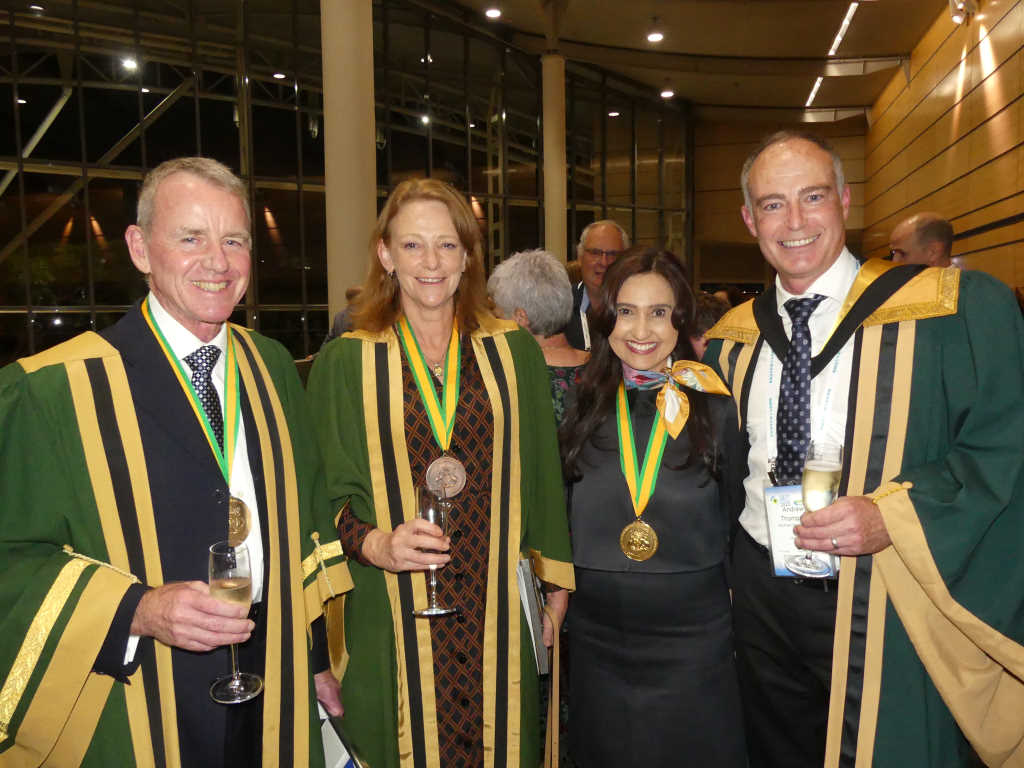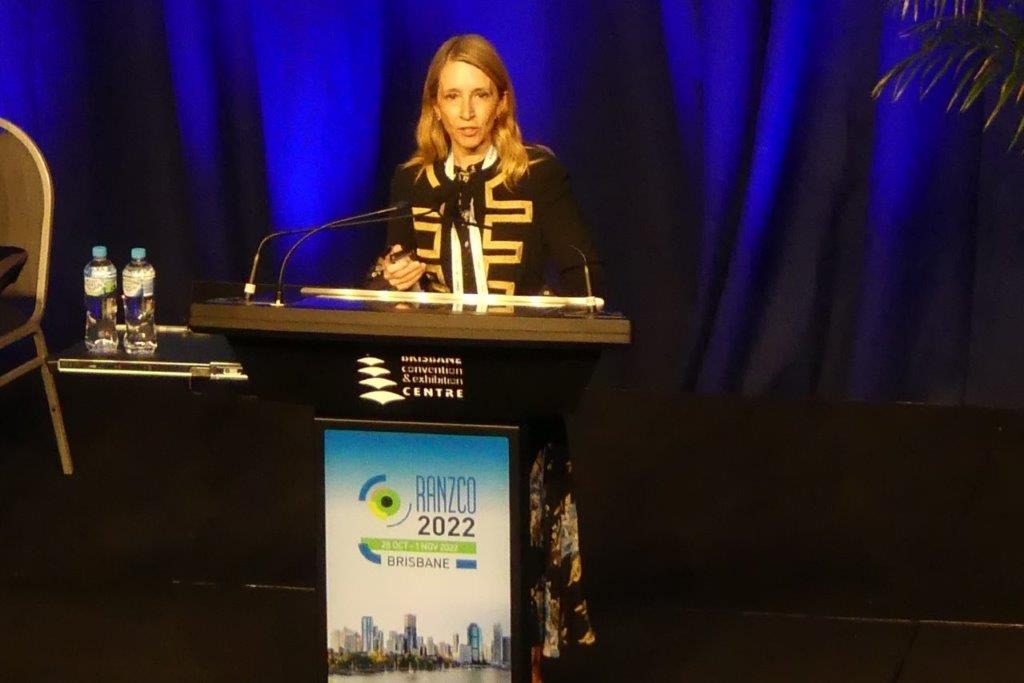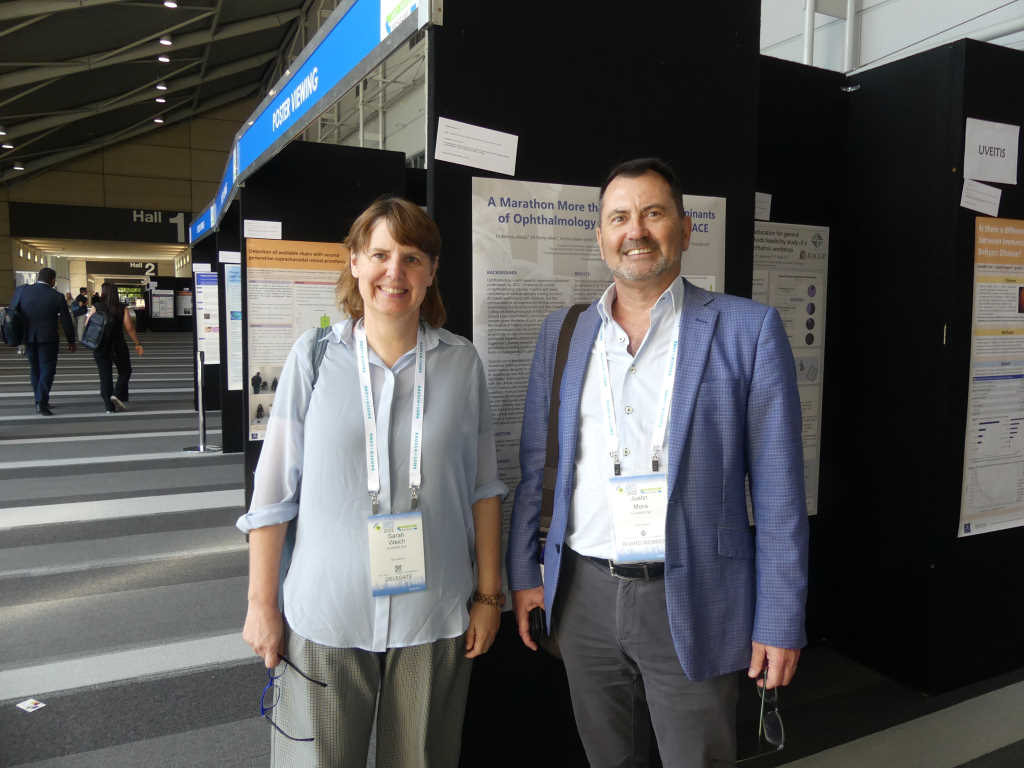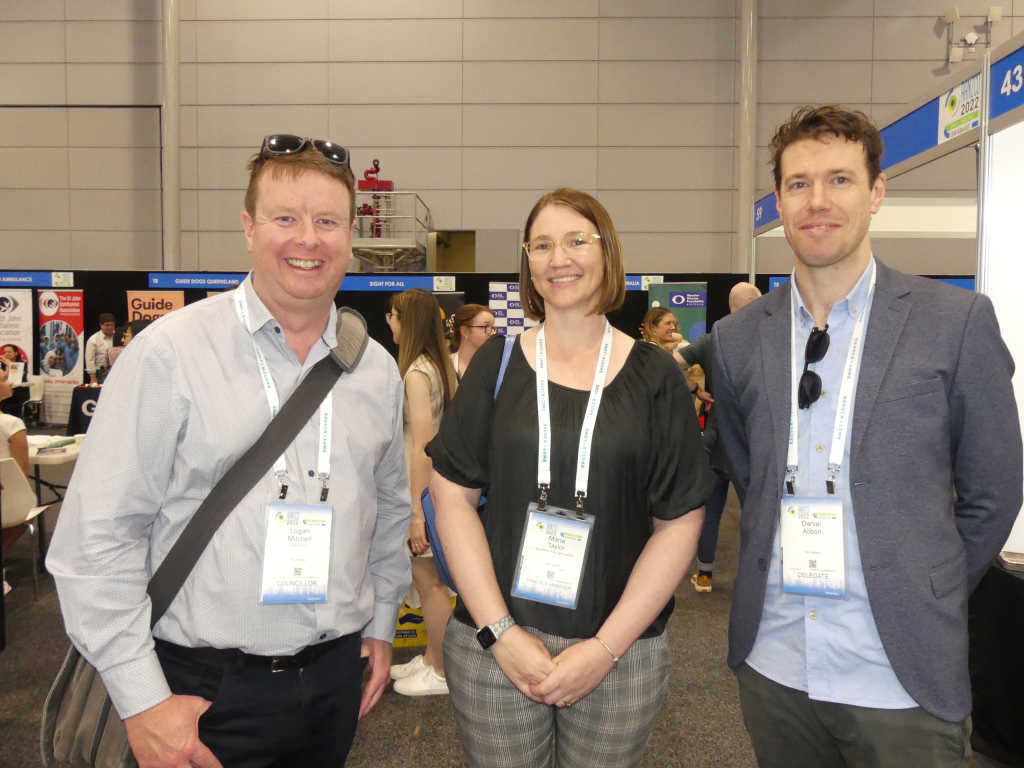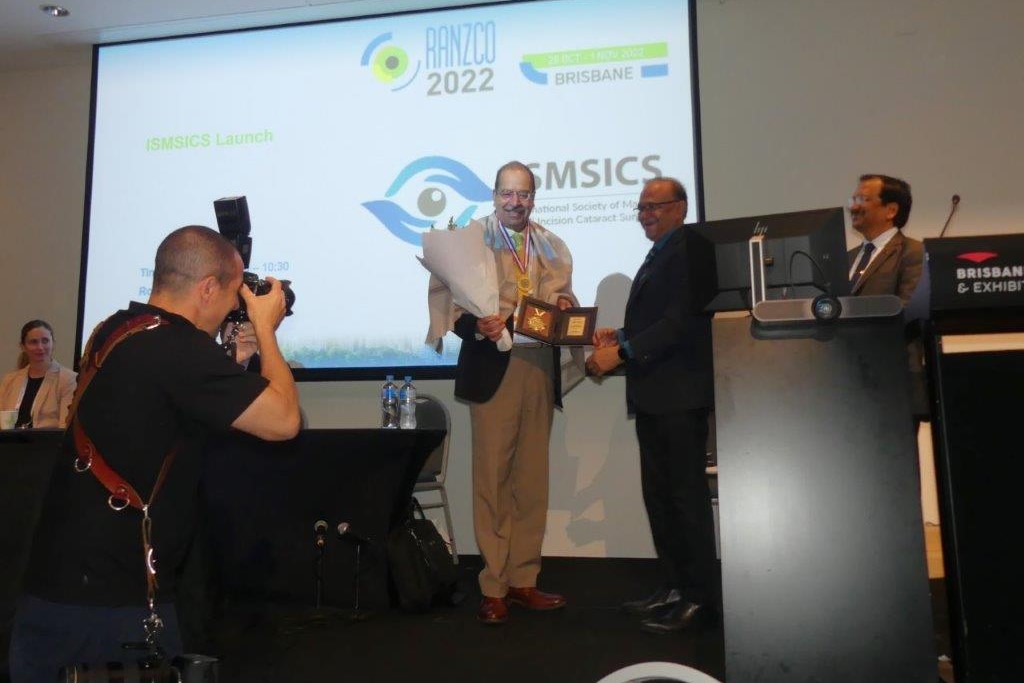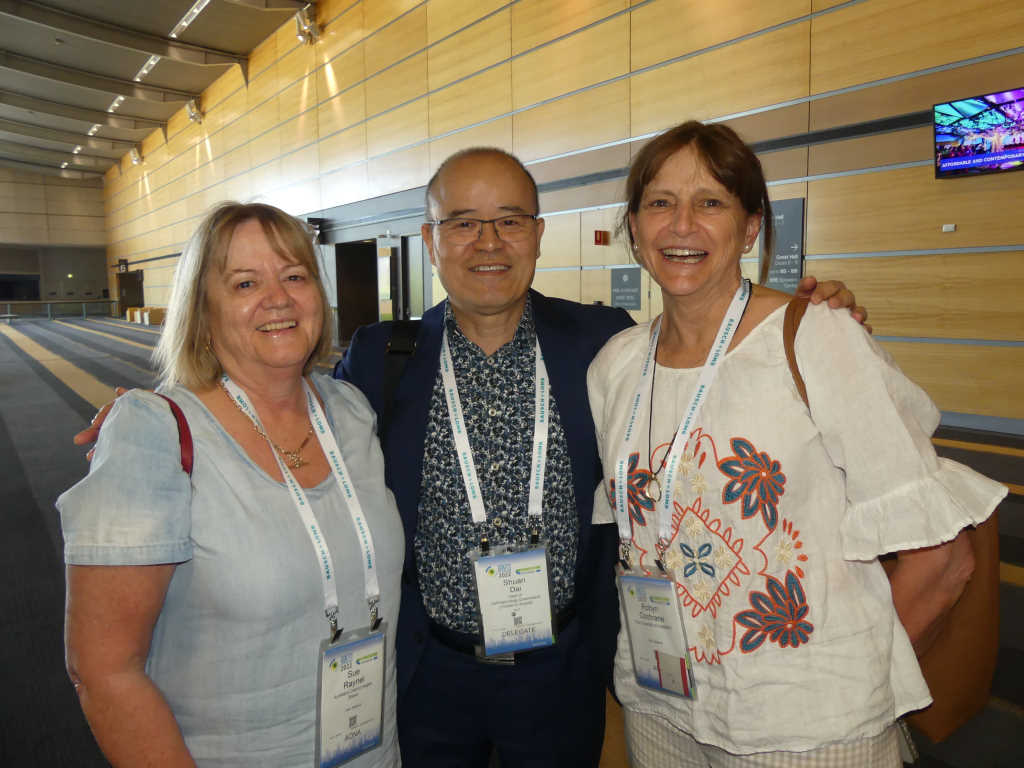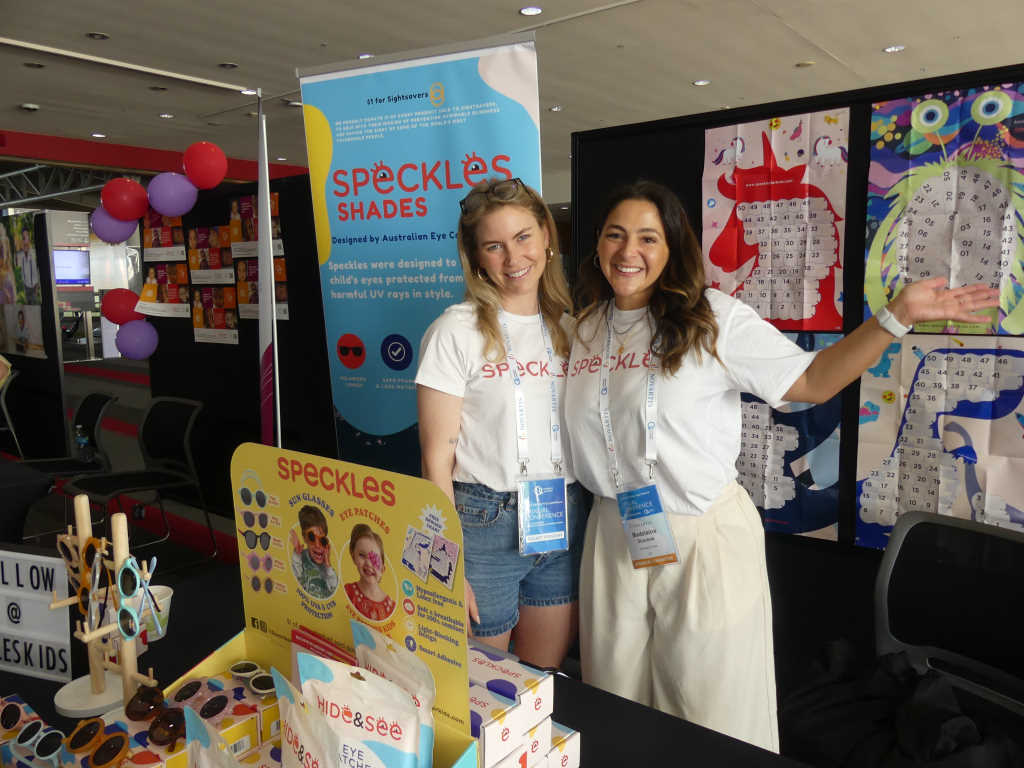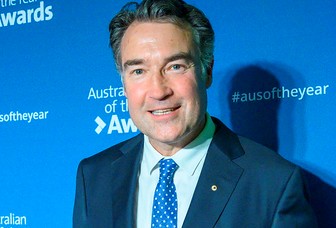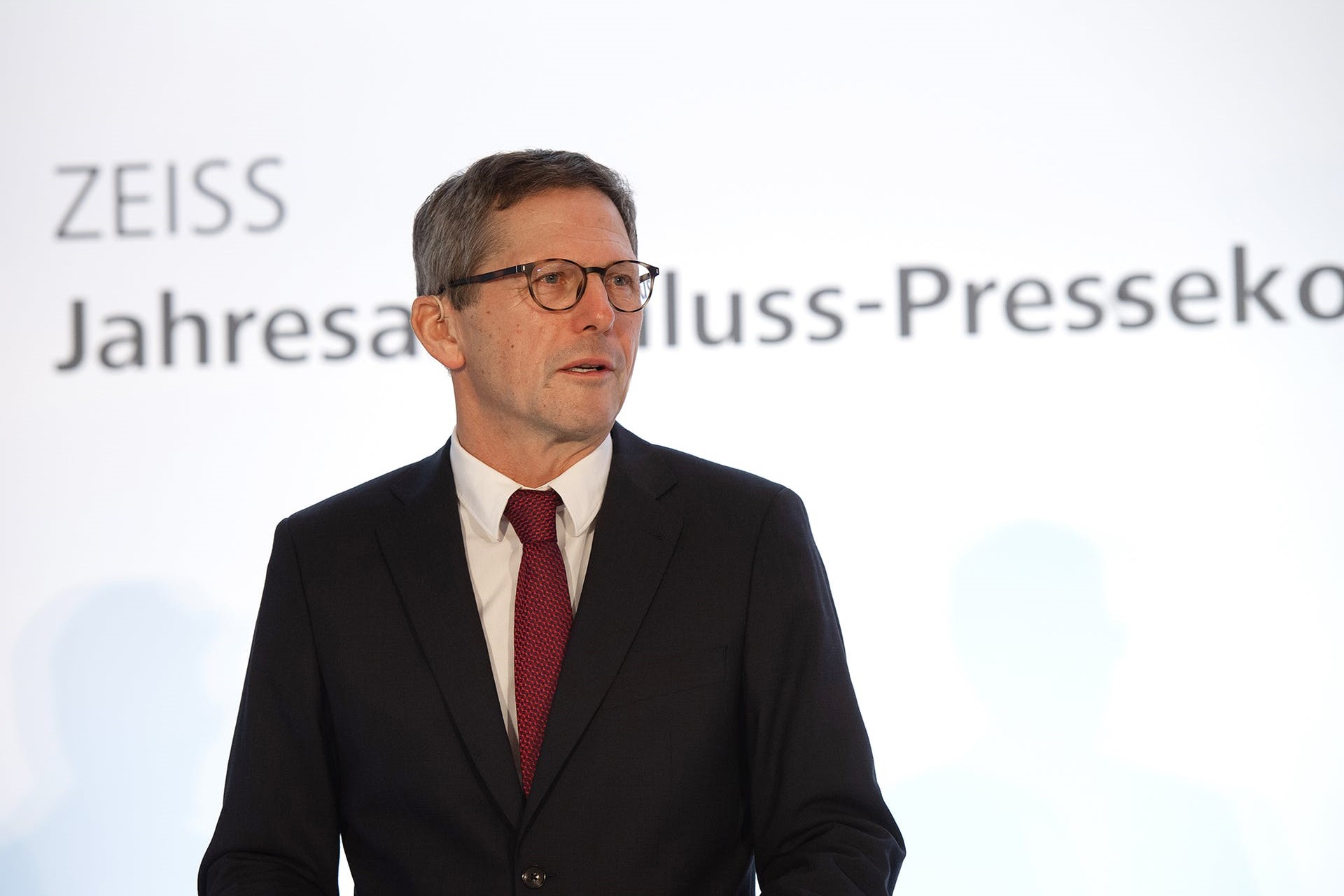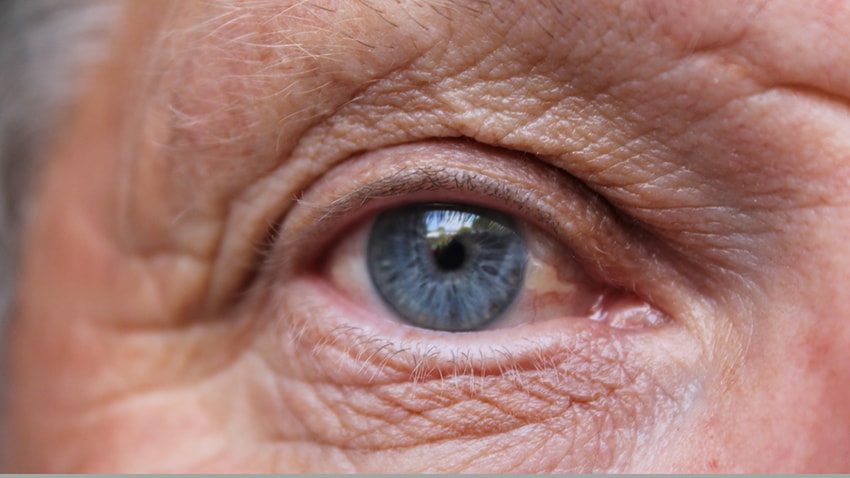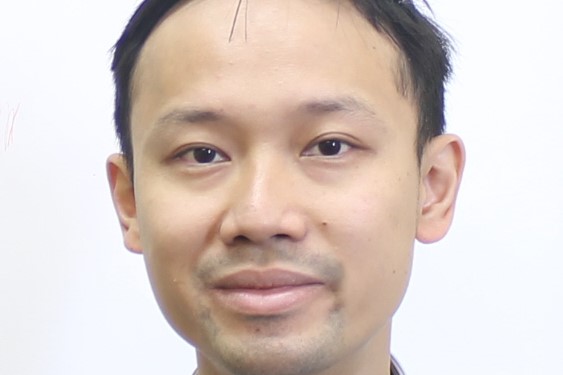RANZCO 2022: Celebrations and a focus on the future
The Royal Australia and New Zealand College of Ophthalmologists’ (RANZCO’s) 53rd Annual Congress started with a much-anticipated graduation and awards ceremony at Brisbane Convention & Exhibition Centre.
This saw several of our New Zealand-trained fellows – Drs Aaron Wong (Melbourne), Alexandra Crawford (Auckland), Dan Allbon (Auckland), Noor Ali (Canberra), Priya Samalia (Christchurch), Riyaz Bhikoo (returning to Auckland soon), Sid Ogra (Auckland) and Verona Botha (Waikato) – graduate proudly in person after a much-delayed ceremony due to Covid-19. We also saw strong New Zealand representation at the awards ceremony, with College Medals awarded to Professor Helen Danesh-Meyer (the first New Zealand woman ophthalmologist to be awarded one) and Dr Stephen Best (Auckland). This year, RANZCO also recognised Associate Professor Andrea Vincent (Auckland) who was awarded the Federal Meritorious Service Award last year and Dr Genevieve Oliver (Christchurch) who scooped one of two Young Achiever Awards.
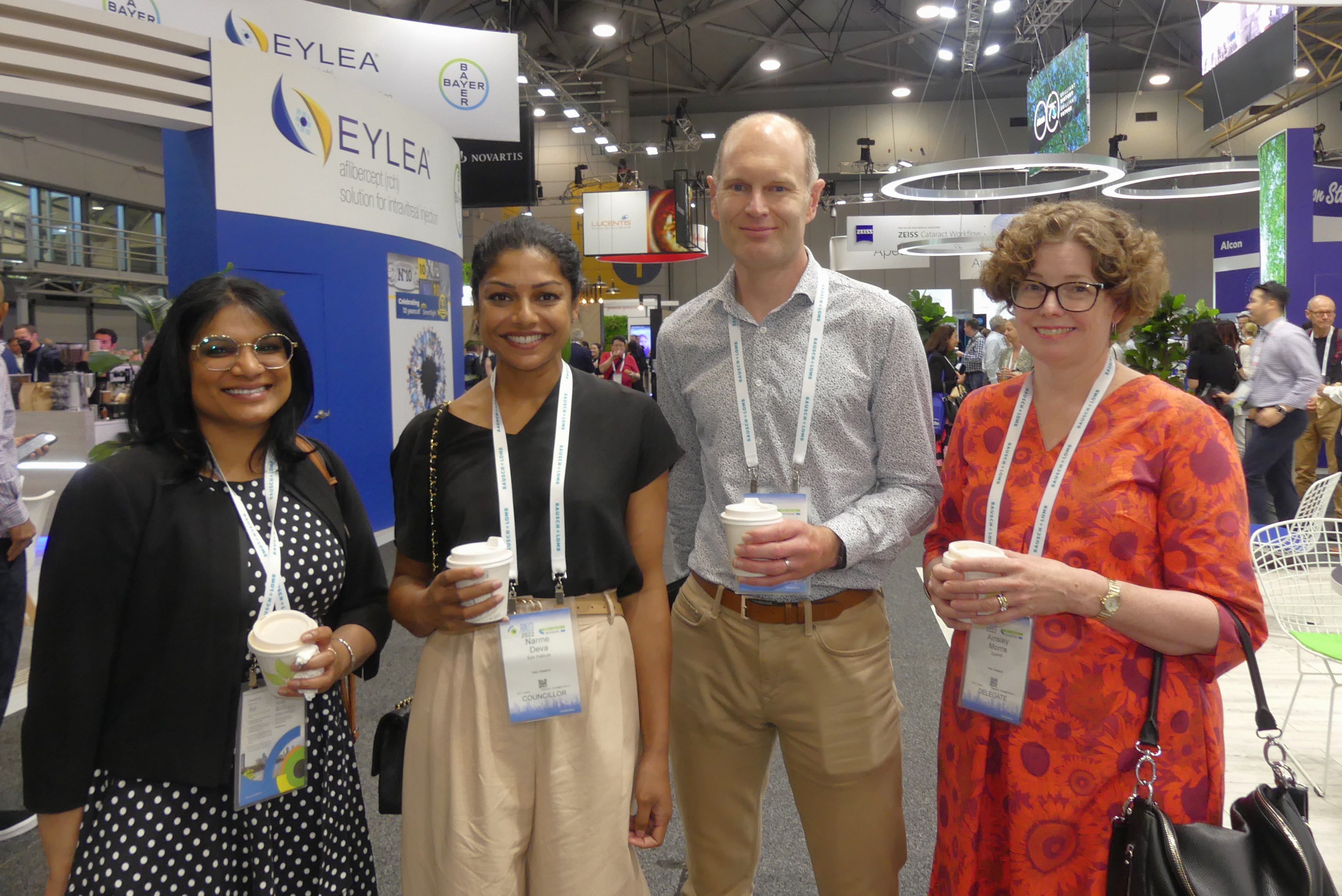
Drs Priya Samalia, Narme Deva, Graham Reeves and Ainsley Morris
Covid changes and ocular oncology
The first day of the congress saw Dr Ben Hamer, head of Future of Work at PricewaterhouseCoopers Australia and adjunct professor at Melbourne’s Swinburne University of Technology, discuss the concept of future thinking. We were reminded of global achievements to-date, including instant language translation through an earpiece (designed by Waverley Labs) and improvements in diagnostic scanning, such as breast cancer mammogram detection through artificial intelligence. Covid has caused major disruptions globally, changing the lifestyle, resources and need for trust and transparency in the workplace and the way we work. As Dr Hamer volunteered, the new future may see the introduction of neighbourhood business districts, mobile meeting rooms and possibly even doggy daycare being introduced into the workplace, though this may not necessarily be applicable in the healthcare setting. This interesting and eye-opening lecture set the scene for the updates in ophthalmology and the way the profession will adapt to changes.
Professor Sarah Coupland, consultant pathologist at Liverpool Hospital, UK, then delivered an update on ocular oncology with a focus on ocular lymphoma. This disease makes up 5% of all cancers and 55% of all haematological malignancies and uveal melanoma – a deadly cancer with no curative treatment to date. Prof Coupland noted that since the 2018 World Health Organization (WHO) classification, a new term has been included in the diagnosis of lymphoma, which is primary large B-cell lymphoma of immune-privileged sites. She stressed that when concerned about ocular malignancy, specimens should not be sent in glutaraldehyde as it is a strong fixative, and to use formalin instead. However, if sending a vitreous sample, send in CytoLyt (not formalin) and if there is suspicion of infection, send the sample fresh. In case of doubt, she assured us that pathologists are friendly folk and that we should call them for clarification.
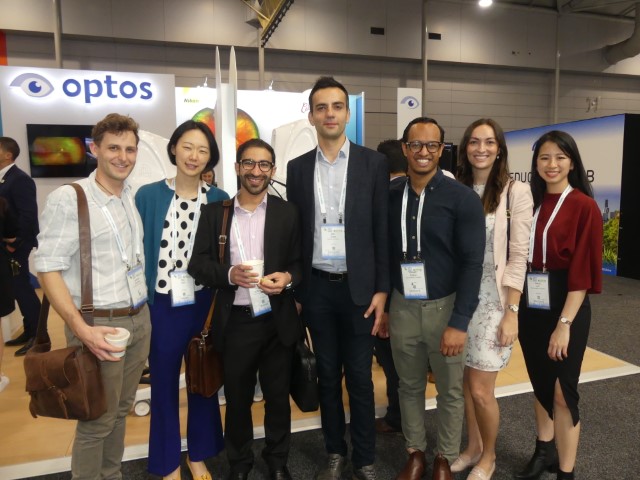
Drs James Corbett, Bia Kim, Haitham Al Mahrouqi, Mo Ziaei, Aki Gokul, Lize Angelo and Joevy Lim
Dealing with inequities
This year's Fred Hollows Lecture was delivered by Professor Clare Gilbert (a vitreoretinal surgeon from the London School of Hygiene and Tropical Medicine), who focused on eye health in low- and middle-income countries. Prof Gilbert identified the main causes of inequity as unfair distribution of power or resources and dysfunctional global governance, highlighting a 2.4-fold difference in vision impairment prevalence in countries with the highest and lowest incomes and 77% of vision impairment being due to cataract and refractive error. Not surprisingly, the least developed countries have more years of disability. Her team noted that females were more visually impaired than males, possibly attributable to marital status (most vision impaired women were widowed) and would only worsen over the following decades. Prof Gilbert reiterated our commitment to the global eye health target of increasing cataract surgery coverage by 30% for each country over the next 10-20 years. However, a considerable barrier to this is the low number of ophthalmologists in low-income countries.
Clinical updates
During the Australia Vision Research plenary, we heard from several speakers, including Associate Professors Vivek Gupta (Macquarie Medical University) and Fanfan Zhou (head of the Molecular Drug Development Unit at Sydney Pharmacy School), on their recent research. A/Prof Gupta shared the discovery of how the tau protein plays an important role in retinal health (in glaucoma, tau overexpression exacerbates inner retina functional loss and degenerative changes), while A/Prof Zhou shared a new potential uveal melanoma treatment using NM2, a drug targeting mitochondria and fatty acids, which is showing promising results by inducing melanoma cell death and suppressing growth.
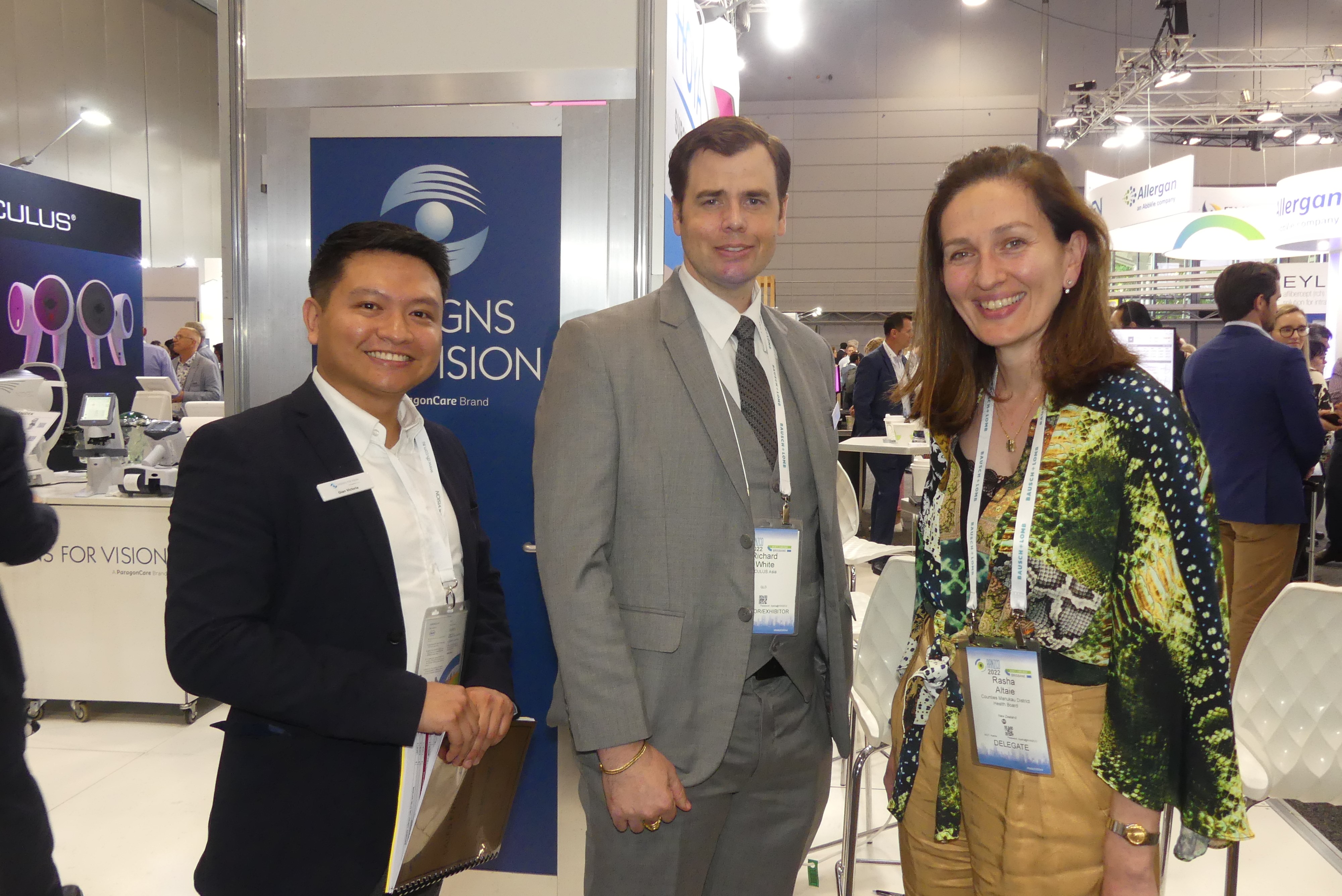
 DFV’s Gian Victoria and Richard White with Dr Rasha Altaie
DFV’s Gian Victoria and Richard White with Dr Rasha Altaie
Professor Debra Goldstein (Northwestern University, US) provided an update on uveitis, sharing a case of wrongly diagnosed genital herpes in a patient with Behcet's, reminding us of the importance of a full systems enquiry. Regarding the armamentarium of uveitis treatments, Prof Goldstein shared that adalimumab (Humira) is a safe drug to use during postpartum and tocilizumab (Actemra) is particularly good in treating retinal vasculitis. However, she reminded us that adalimumab biosimilars (such as Amgevita, Hadlima and Idacio) are not interchangeable with generic formulations of adalimumab and may produce uveitis flares.
Professor Graham Barrett delivered an update on cataracts and surgical lenses. He advised the amount of dysphotopsia with an extended depth of focus (EDOF) lens depends on the amount of myopic defocus. So, for predictable vision with EDOF lenses, -1.0D to -0.25D myopia is a good target. Furthermore, the aim of total spectacle independence is unnecessary if the patient may not be happy with the side effects (such as using multifocals), which provided a gentle reminder to consider the ethics of reciprocity in picking the right lens for the patient.
Finally, Professor Donald Tan (founding doctor of Singapore National Eye Centre and ophthalmology professor at National University of Singapore) gave a case-based update on the cornea. Prof Tan reminded us that approximately 50% of penetrating keratoplasties may fail by five years, while 97% of Descemet membrane endothelial keratoplasties (DMEK) are still surviving. He shared a new EndoGlide technique for introducing the Descemet membrane onto the stroma, providing better surgical control, which is now standard in his practice. More impressively, while Covid-19 restrictions were still in place, Prof Tan demonstrated how he could still provide international virtual corneal consults to his Jakarta patients.

Drs Nick Mantell and Alastair Gittos
Memorial lectures
We were honoured to have Prof Danesh-Meyer deliver the Dame Ida Mann Memorial Lecture. Prof Danesh-Meyer did not disappoint, with her ‘Adding insight to injury’ talk describing the emerging and exciting understanding of the links between the eyes and the brain. She demonstrated how we can now diagnose neurological disorders such as Alzheimer's, lower cognitive function and Huntington's disease by exploring the patterns of optic nerve thinning and degeneration. More recently, her team has been able to diagnose concussion, previously undetected on standard neuroimaging (such as MRI), by digitally capturing microsaccadic intrusions invisible to the naked eye. Ending her talk eloquently, Prof Danesh-Meyer highlighted advances in neuroimaging, such as the use of amplified MRI, which can be used to visualise tiny motion variations in the brain, which in the future may allow us to predict intracranial pressure or even diagnose glaucoma.
Professor John Grigg (University of Sydney) gave this year’s Sir Norman Gregg Lecture. He spoke to us about developments in retinal vein occlusion (RVO), a relatively recent field, with vein bypass being the first treatment developed in 2020. It is still unclear why some people get RVOs while others don’t. Still, changes in the vessel, such as flow restriction or venous endothelium changes from hypertension, can predispose an individual to thrombotic conditions. Prof Grigg highlighted lower central venous pressure as a protective factor, with patients achieving better visual outcomes when compared to those with high pressures, who all went blind within three months. Current treatment includes thrombolytics (such as tenecteplase) in acute RVO as it showed acute improvement/resolution, but this rapidly re-occurred after one month. In addition, 50% of people still require anti-VEGF treatment three years post-RVO, which is not a sustainable long-term strategy. A newly researched technique, anastomosis, uses laser to form a connection between capillaries and retinal veins and had better outcomes than intravitreal injection alone. A combination trial with ranibizumab and anastomosis vs ranibizumab alone showed significant improvement in visual acuity and reduced the frequency of injections.
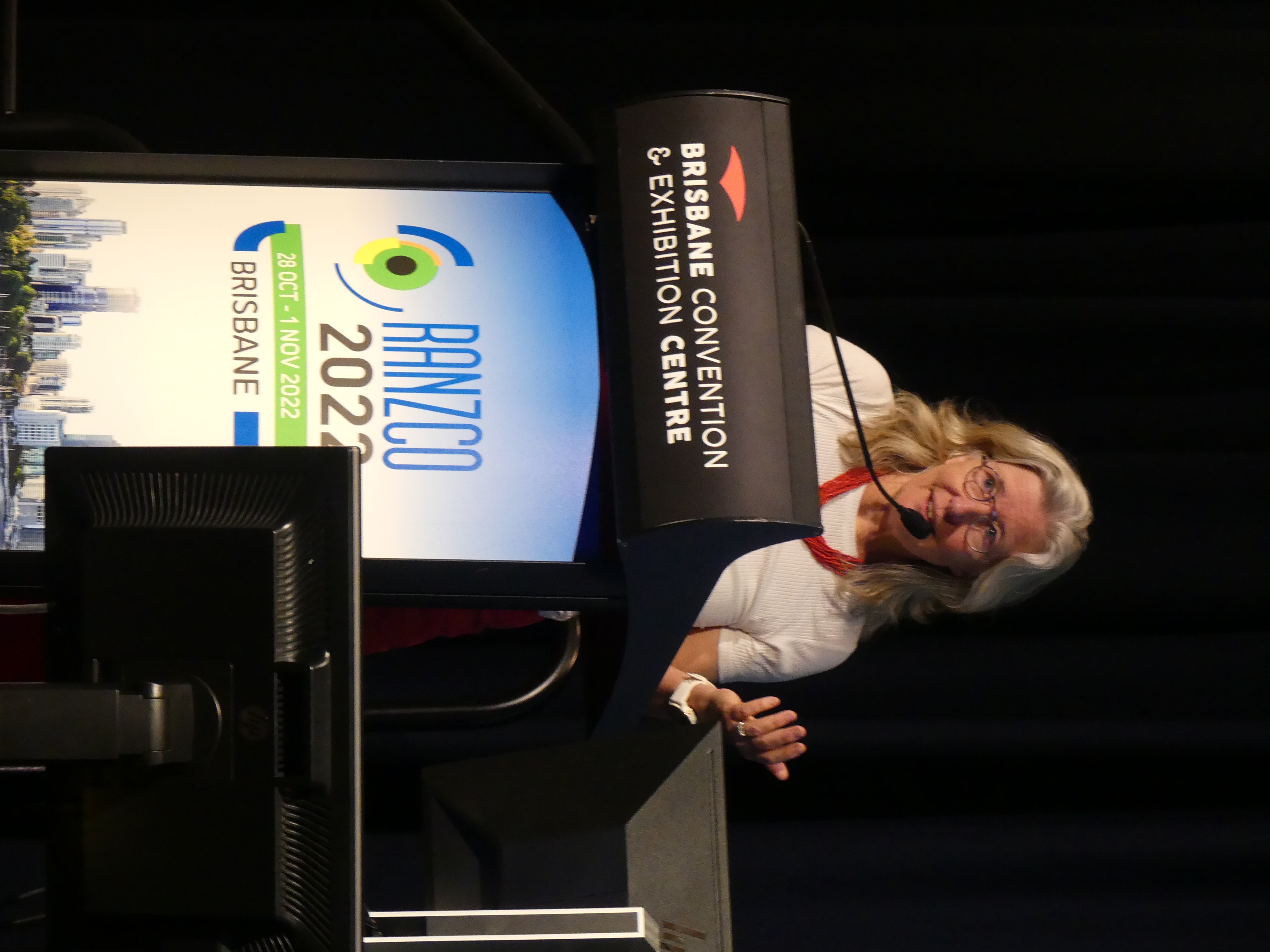
Dr Sarah Crowe, founder of the 4eyes Vision Foundation and simple refractive testing, frames and lenses kit
Awards and looking forward
Lastly, it is not a RANZCO congress without the annual best paper presentations. This year Melbourne’s Dr Brian Ang took the Gerard Crock Trophy for his talk, ‘A randomised controlled trial of cataract surgery versus combined cataract surgery with insertion of iStent Inject’ and Adelaide’s Dr Ayub Qassim won the John Parr Trophy for his talk, ‘Common genetic variants are predictive of visual field progression in glaucoma: a prospective longitudinal study using a glaucoma polygenic risk score’. From Auckland, senior corneal fellow Dr Haitham Al Mahrouqi and clinical research and crosslinking fellow Dr Lize Angelo won the People's Choice Award for best film and poster, respectively. Dr Al Mahrouqi's film was entitled Keratoplasty Nightmares, while Dr Angelo's presentation was entitled ‘Repeatability and agreement of topometric parameters between a topographer, Scheimpflug tomographer and OCT tomographer in keratoconus’.
And that's a wrap! This was the first international conference we have managed to attend as a team since Covid-19 reached our shores and it was indeed one of the most memorable conferences we’ve ever attended! You could feel the joy from everyone's expressions at being able to travel and catch up with friends and colleagues, old and new. The 54th RANZCO congress will be held in Perth this time next year and we look forward to seeing you there!
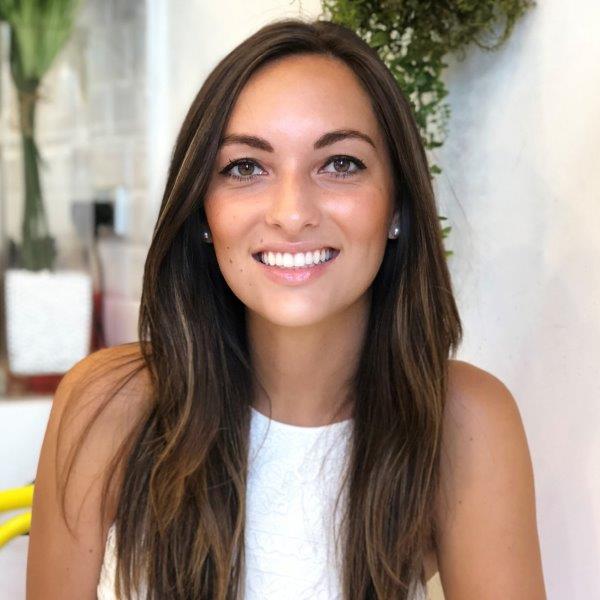
Dr Lize Angelo is an HRC clinical research fellow pursuing a PhD in diagnosing and treating keratoconus, including aspects of equity of access to services in Aotearoa, in the University of Auckland’s ophthalmology department, headed by Professor Charles McGhee.
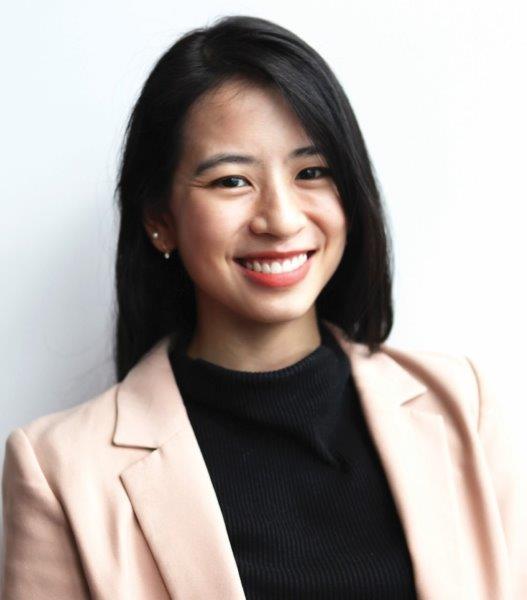
Dr Joevy Lim is an HRC clinical research training fellow and PhD candidate studying the status of ocular melanoma in New Zealand, supervised by Prof Charles McGhee and Drs Stuti Misra and Akilesh Gokul.









